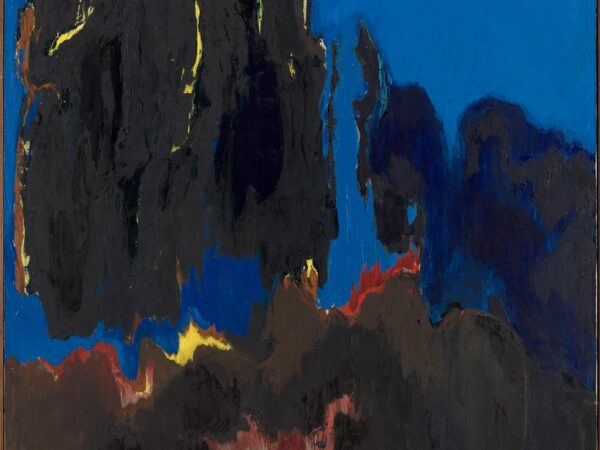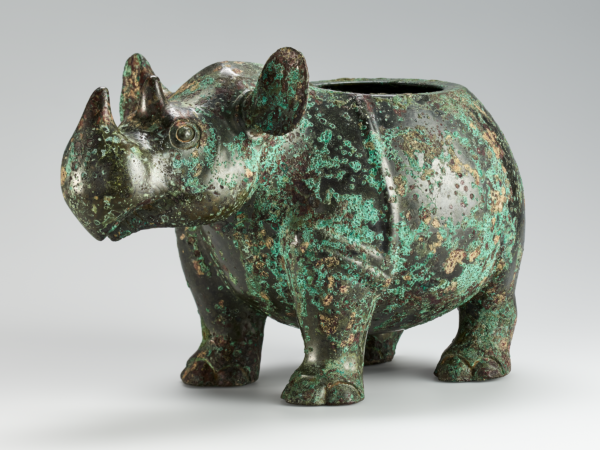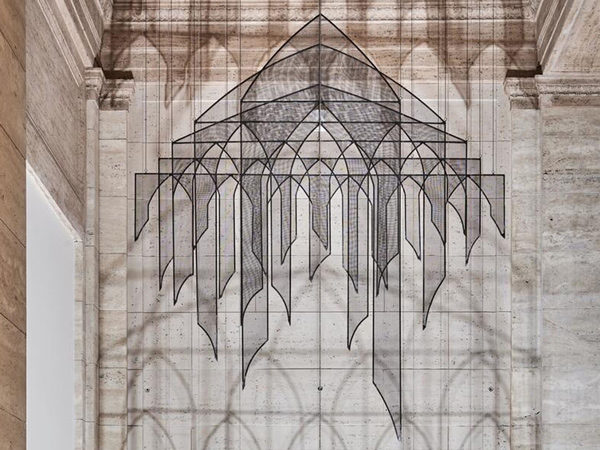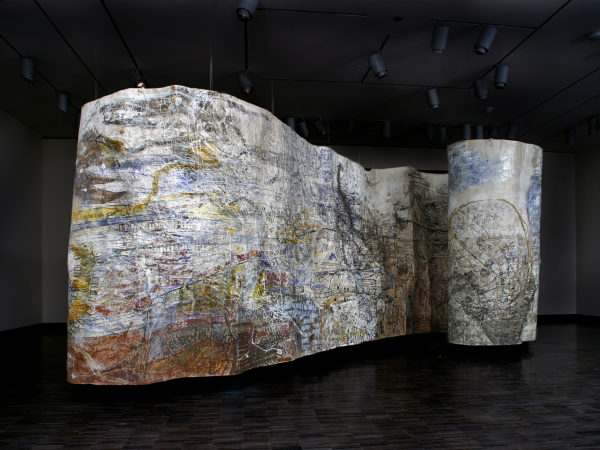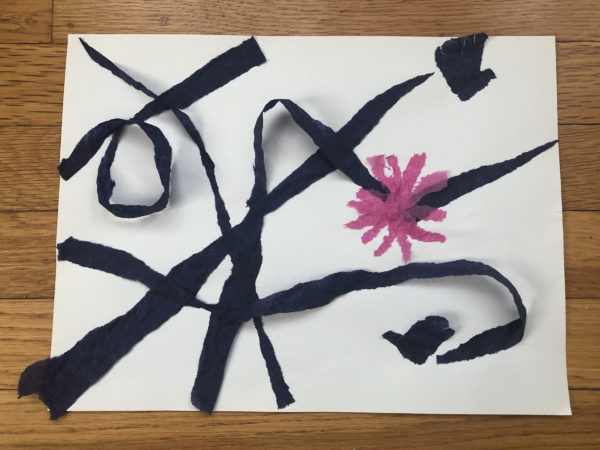Activity
The Development of Landscape Painting in China through the Tang Dynasty (618-906)

“Scripture of the Hidden Talisman”
When one thinks of Chinese painting one might think of hanging scrolls and handscrolls. Wall paintings were an early form of painting, preserved today in cave temples, temple buildings, and tombs. Written records describe paintings on palace walls and in humbler dwellings. One of the first advocates of landscape painting, Zong Bing, wrote in the 5th century about the joys of having landscape paintings on the walls of his house so he could imagine himself in the untrammeled world of mountains and streams, mists, trees, and rocks. Hanging scrolls of silk provided wall decoration that could be changed or removed. Handscrolls, primarily used for written documents, became vehicles for the illustrations of paragons of virtue or of supernatural spirits as well as panoramic landscapes, and bird and flower paintings.
Smaller formats for painting evolved as the practice of making and giving small paintings as gifts became customary. Oval Chinese fans and album leaves of silk were popular in the Southern Song dynasty (1127-1279), followed by paper album leaves and fans of the Japanese folding type in the Yuan (1279-1368) and later dynasties.
Even when color was most important in Chinese painting, brushwork played a role. In the Tang dynasty (618-906), Chinese painters explored all means at their disposal to create images describing the world around them. Figure painting was important as well as animals and birds in natural settings. Early works about painting call the art form “making boundaries.” Outline was a very essential feature, and artists explored linear brushwork to give fullness, movement, and vitality to the figures. Two of these early artists Gu Kaizi and Wu Daozi, were famous for developing very different line styles, the one using very fine but tough lines that seem to float without breaking, called “floating silk-thread lines” and the other using strong “iron wire lines” to impart a sense of muscle mass and energy to his figures. Wang Wei (699-759) became the first painter to use ink only (or at least primarily) to depict a landscape scene.
Later painters credited Wang with originating the use of texture strokes (cun) to fill in and give geologic credence to his outlined mountain and rock forms. His landscape style with ink strokes defining the texture of mountains and washes of ink or pale color indicating light and dark areas, presented a striking contrast to the rich blue-green mountain landscapes outlined and colored with the intense mineral pigments azurite and malachite of the prevailing blue-green landscape style. Gradually more and more gentlemen-scholars of the succeeding dynasties seized upon this distinction as the standard for separating scholar-amateurs from professional artists, until in the 16th century it was all but written in stone by the painter/theorist Dong Qichang (1555-1636).
The heritage of Tang painting continued in the court styles of later dynasties perpetuating gongbi, or meticulous, style of outlines and colors on silk. At the same time the new landscape painting in ink became the dominant style. In keeping with the cultural, religious, and philosophical basis in Confucianism and Taoism, the Chinese artist sought to express his vision of what is essential through landscape. The Taoists saw in nature the ultimate mystery and harmony of existence. The holy man for them was the immortal; the one who was so in tune with the universe that he could live forever, dwelling in the mountains, existing on dew and crushed jade. For the Confucians, nature, as experienced in the mountain wilderness, exhibited the perfect li, or order of the universe, after which man should pattern his social existence. The Chinese words for “landscape,” shanshui hua, literally mean “mountain and water painting,” thus indicating the essential elements that make landscape the ultimate vehicle for artistic expression.
Landscape also became the first genre in which artists fully explored the many techniques of brushpainting. Brushstrokes, the methods of using brush and ink developed in the practice of calligraphy, were the artists’ means to their ends. The monumental landscapes of the Five Dynasties (906-960) and Northern Song (960-1127) periods initiate the exploration of various short dots and lines used in dense concentrations to build up a viable mountain of tough and eroded rocks, clinging vegetation, running streams, and forest trees. In other words, at this time painters used brushstrokes to recreate on paper the majesty and diversity of nature. They developed a rich variety of texture strokes including long and short hemp fiber strokes, cloud head strokes, raveled rope, and axe-cut strokes. The artist holds the brush at various angles to the paper and moves his wrist differently to produce each stroke. For instance, fine lines are produced by using the tip of the brush held vertically; the severed band stroke starts with a vertical or slightly oblique brush, turns, and ends with the brush held with its side to the paper. The rhythmic movement of the arm and wrist are part of the rhythmic vitality of a painting or a character. Wang Xizi, the 4th century calligrapher famous for his cursive script, enjoyed watching geese because “the movement of their turning necks seemed to him to resemble the movement of a man’s wrist when he is handling the brush.”
In this landscape tradition, painters moved from a decoratively colorful and realistic form to one that is more restrained and conceptual. Although they still used color in light washes of blue-green and reddish-brown, painters conceived the pictures in black and white. In Chinese color theory, black contains all colors; thus theorists believe that people can conceive all colors in the various tones of ink. The poet-painter Su Dongpo was once criticized for painting bamboo with red ink, which the viewer said did not represent the natural aspect of the plant. When asked what color he should have used, Su’s critic replied, “Black, of course.”

